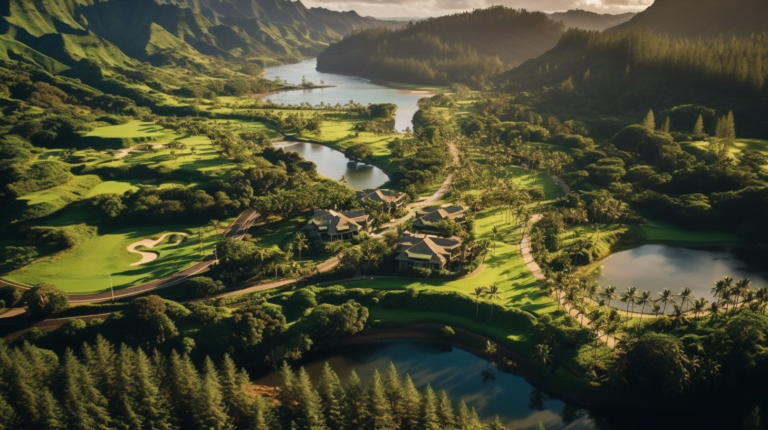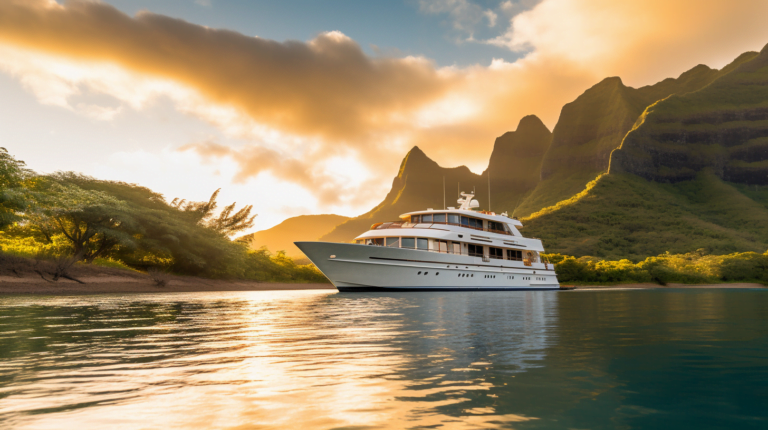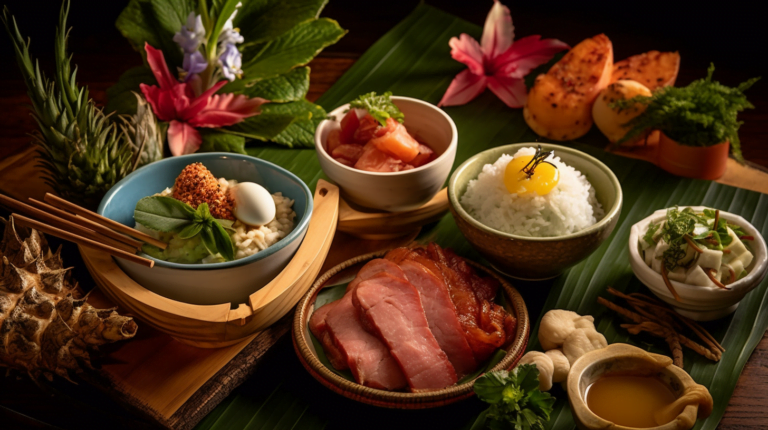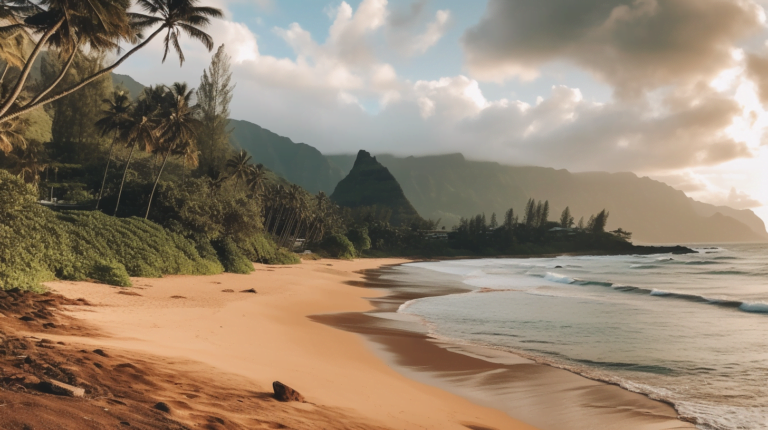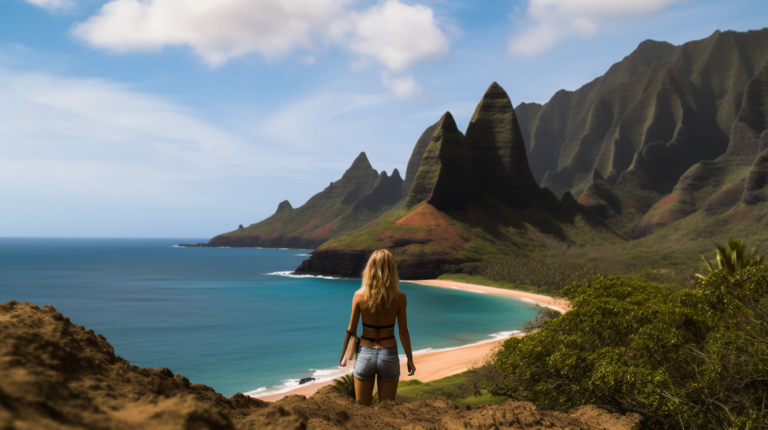Unveiling the Botanical Marvels of Kauai’s Exotic Flora 🌺
Welcome to Kauai, the Garden Island of Hawaii, where the lush and diverse flora will take your breath away. As you embark on a botanical journey through the island, you will discover an array of exotic and beautiful plants that thrive in the unique environment created by the island’s climate and soil.
From orchids to banyan trees, Kauai’s flora is a true wonder to behold. The island’s warm and humid climate, combined with volcanic soil, creates the perfect conditions for a diverse range of flora to flourish. You will find a variety of orchid species, each one more beautiful than the last, with colors ranging from vibrant purple to delicate white.
Kauai’s botanical gardens offer a glimpse into the island’s flora, showcasing not only orchids but also other exotic plants such as hibiscus, plumeria, and bird of paradise. As you explore the island, you will also come across iconic plants such as banyan trees, whose sprawling roots and majestic presence make them a favorite among locals and visitors alike.
Join us on a journey to discover Kauai’s exotic flora, and experience the beauty of nature in its purest form.
Key Takeaways
- Kauai is known as the Garden Island of Hawaii and has a diverse range of flora including orchids, banyan trees, hibiscus, plumeria, and bird of paradise.
- Invasive species pose a major threat to Kauai’s flora and conservation efforts are needed to protect unique plant species.
- Partnerships for conservation involving collaboration between government agencies, non-profit organizations, and the local community are crucial for successful conservation efforts.
- Rising temperatures and changing rainfall patterns due to climate change are significant challenges that need to be addressed to protect Kauai’s exotic flora.
Introduction to Kauai’s Exotic Flora
Get ready to explore Kauai’s lush and vibrant landscape, where exotic flora flourishes in every direction. The history of Kauai’s flora is as rich as its diversity. For centuries, Hawaiians relied on the plants for food, medicine, and cultural significance.
The first Polynesian settlers brought with them a limited selection of plants, which they used as a foundation for building a sustainable ecosystem. Over time, they learned to cultivate and propagate new species, eventually creating a thriving botanical paradise. The cultural significance of Kauai’s flora is still felt today. Many of the plants are used in traditional Hawaiian practices, such as hula and lei-making.
The island’s unique climate and soil conditions provide the perfect environment for a diverse array of plant life. From the towering trees of the rainforest to the delicate flowers of the coastal plains, every inch of Kauai’s landscape is teeming with life. But just what role does climate and soil play in shaping this botanical wonderland? Let’s take a closer look.
The Role of Climate and Soil in Flora Diversity
The diversity of plant life in an area is heavily influenced by the unique combination of climate and soil conditions, which can result in as many as 10,000 different species in a single region.
In Kauai, the flora diversity is attributed to the island’s warm tropical climate and diverse soil composition. Here are some ways climate adaptation and soil composition contribute to Kauai’s exotic flora:
- Climate adaptation: Kauai’s flora has adapted to the island’s warm tropical climate, which is characterized by high humidity, frequent rainfall, and strong winds. Some plants have evolved unique adaptations to these conditions, such as thick leaves to retain moisture or flexible stems to withstand high winds.
- Soil composition: Kauai’s soil is rich in volcanic ash and minerals, which provides the necessary nutrients for plant growth. The island’s diverse soil composition, ranging from nutrient-poor red dirt to nutrient-rich black soil, also contributes to the wide variety of plant species found on the island.
- Microclimates: Kauai’s varied topography and microclimates, such as the wetter north shore and drier south shore, provide different habitats for plants to thrive. This results in the formation of distinct plant communities in different areas of the island.
- Endemism: Kauai is home to many endemic plant species, which are found nowhere else in the world. These species have adapted to the island’s unique climate and soil conditions over thousands of years, resulting in a truly unique flora.
As you delve deeper into Kauai’s exotic flora, you’ll discover the island’s impressive variety of orchid species.
Orchid Varieties
With over 50 different varieties, visitors to Kauai can marvel at the stunning beauty of orchids in a range of colors, shapes, and sizes. Orchid cultivation on the island has been successful due to the ideal climate conditions that allow for year-round growth.
These beautiful flowers have also been symbolic in many cultures, representing love, luxury, and strength. From the delicate white and pink phalaenopsis to the vibrant yellow and red cattleya, the orchids in Kauai are a sight to behold. With the help of local experts and orchid enthusiasts, many of these varieties have been carefully cultivated and preserved.
These flowers can be found in botanical gardens, private collections, and even in some local homes. As you continue your botanical journey through Kauai, you will discover the many wonders of the island’s exotic flora.
The botanical gardens on Kauai offer a unique opportunity to learn about the different plant species, their history, and the cultural significance they hold.
Botanical Gardens on Kauai
You’ll love exploring the stunning variety of plant species in Kauai’s many botanical gardens, including the McBryde Garden which offers guided tours of its diverse collection of tropical and subtropical plants. The garden is home to over 50 acres of land, featuring a wide range of rare and endangered plant species. You’ll be amazed at the sheer number of plants that thrive in the garden, with over 5,000 species on display.
The Limahuli Garden and Preserve is another must-visit spot for nature enthusiasts. This garden, located on the north shore of Kauai, is home to some of the rarest plant species in the world, including the indigenous Kauai plants that are only found on the island. The garden offers guided tours that provide a unique educational experience about the importance of rare plant species conservation.
With such diverse and beautiful plant life on display, it’s no wonder that botanical garden tours are a popular activity for visitors to Kauai. As you continue your botanical journey, you’ll be captivated by the iconic banyan trees and other stunning plant species that make up the island’s unique flora.
Banyan Trees and Other Iconic Plants
Don’t miss out on experiencing the awe-inspiring beauty of banyan trees and other iconic plants during your visit to the botanical gardens in Kauai. The banyan tree, also known as the ‘Tree of Life’, is a symbol of strength, stability, and longevity. Its aerial roots that grow towards the ground and eventually become secondary trunks are a representation of the interconnectedness of all living things.
In Hawaiian culture, the banyan tree holds spiritual significance as a meeting place for the gods and a source of protection for the people. Other plants that hold cultural significance and are iconic to Kauai include the ti plant, used for medicinal and ceremonial purposes, and the hibiscus flower, which is the state flower of Hawaii.
The ti plant’s leaves are used to create leis, and its roots are used for medicinal remedies such as treating fevers and stomach pains. The hibiscus, with its vibrant colors and delicate petals, represents the beauty and fragility of life. These iconic plants are not only beautiful to look at but also hold a rich history and cultural significance.
As you continue your botanical journey in Kauai, immerse yourself in the cultural importance of these iconic plants before moving on to learn about the medicinal plants and their uses in the next section.
Medicinal Plants and Their Uses
Explore the healing properties of the diverse array of medicinal plants found throughout the gardens, such as the noni fruit. This fruit has been used for centuries in Polynesian traditional medicine to treat a variety of ailments, including infections and inflammation. It’s rich in antioxidants, vitamins, and minerals, and is believed to have antifungal, antibacterial, and anti-inflammatory properties. The noni fruit can be consumed raw or in juice form as a herbal remedy for various conditions, including digestive issues, skin problems, and respiratory infections.
In addition to the noni fruit, Kauai’s exotic flora is home to many other medicinal plants that have been used for centuries in traditional medicine practices. Some of these plants include the mamaki tea plant, which is known for its soothing and calming effects on the body, and the awa plant, which has sedative properties and is commonly used to promote relaxation and sleep.
However, as with many other traditional practices, the use of herbal remedies is not without controversy, and there are concerns about the safety and efficacy of these treatments. In the next section, we’ll explore some of the threats to Kauai’s flora and the impact they have on the island’s plant-based medicine.
Threats to Kauai’s Flora
As you explore Kauai’s exotic flora, it’s important to be aware of the threats that these plants face. Invasive species are one of the biggest challenges, as they can quickly take over and outcompete native species.
Climate change is another major threat, as it can alter the growing conditions and distribution of plants, leading to declines in certain species.
Stay vigilant and informed about these issues to help protect Kauai’s unique flora.
Invasive Species
Beware of the invasive species on Kauai, as they threaten the unique and delicate ecosystem that makes this island so special. Prevention strategies are key to mitigating their impact.
The following list outlines some of the invasive species on Kauai and their potential impact on the local flora:
- Miconia calvescens – This tree, native to South America, is a major threat to Kauai’s forests. It grows quickly, forms dense thickets, and shades out native plant species. Miconia has the potential to transform Kauai’s forests into monocultures, reducing biodiversity and altering the landscape.
- Coqui frog – This small frog, native to Puerto Rico, has a loud mating call that disrupts the natural soundscape of Kauai’s forests. It also preys on native insects and invertebrates, potentially disrupting the food web and ecosystem balance.
- Strawberry guava – This fruit tree, native to South America, has invaded many of Kauai’s forests. It outcompetes native plant species, forms dense thickets, and alters the nutrient balance of the soil, potentially affecting the growth and survival of native plants.
Invasive species are just one of the many threats facing Kauai’s flora. Climate change is another significant challenge, as rising temperatures and changing rainfall patterns may alter the island’s ecosystems in unpredictable ways.
Climate Change
Now that we’ve discussed the threat of invasive species on Kauai’s unique flora, let’s turn our attention to another significant challenge facing these plants: climate change.
As temperatures rise and weather patterns shift, the impacts on Kauai’s plants can be severe. Many species may struggle to adapt to changing conditions, and some may even face extinction.
One significant impact of climate change on Kauai’s flora is the altered timing of seasonal events. For example, as temperatures warm, some plants may start to flower earlier in the year, disrupting the timing of pollinators and potentially leading to a decline in fruit production.
Additionally, changes in rainfall patterns could lead to drought conditions in some parts of the island, putting stress on water-dependent plants. To mitigate these impacts, conservation efforts will need to focus on preserving and protecting Kauai’s unique plant species, as well as working to reduce the causes of climate change.
As we move into the next section, it’s important to remember that while Kauai’s flora faces significant challenges, there is still hope for the future. Through careful conservation efforts and a commitment to protecting the island’s unique biodiversity, we can work to ensure that Kauai’s exotic plants continue to thrive for generations to come.
Conservation Efforts and Future Outlook
There’s no denying that Kauai’s exotic flora is in need of conservation efforts. Did you know that over 50% of Hawaii’s endangered plant species are found on Kauai alone? The island’s unique ecosystem is threatened by invasive species, habitat destruction, and climate change.
However, there is hope for the future of Kauai’s flora through partnerships for conservation and community involvement. Many organizations, such as the Kauai Forest Bird Recovery Project and the National Tropical Botanical Garden, are actively working to protect Kauai’s native plants. These partnerships for conservation involve collaboration between government agencies, non-profit organizations, and the local community.
The community plays a crucial role in these efforts, as they are often the ones who report sightings of rare plants and help with restoration projects. Through these collaborative efforts, Kauai’s exotic flora can be preserved for future generations to enjoy.
Conclusion
Congratulations, you’ve completed your botanical journey through Kauai’s exotic flora.
You’ve learned about the role climate and soil play in determining the diversity of plant life, and the various orchid varieties that thrive here.
You’ve explored the stunning botanical gardens and iconic banyan trees that make Kauai so unique.
But, you’ve also discovered the importance of medicinal plants and the threats to Kauai’s flora.
Despite these challenges, conservation efforts give hope for the future of Kauai’s flora.
As you reflect on your journey, you realize that Kauai’s flora is like a delicate tapestry, woven together with intricate details and patterns.
It’s a testament to the beauty and resilience of nature, and a reminder of the importance of preserving this treasure for generations to come.


